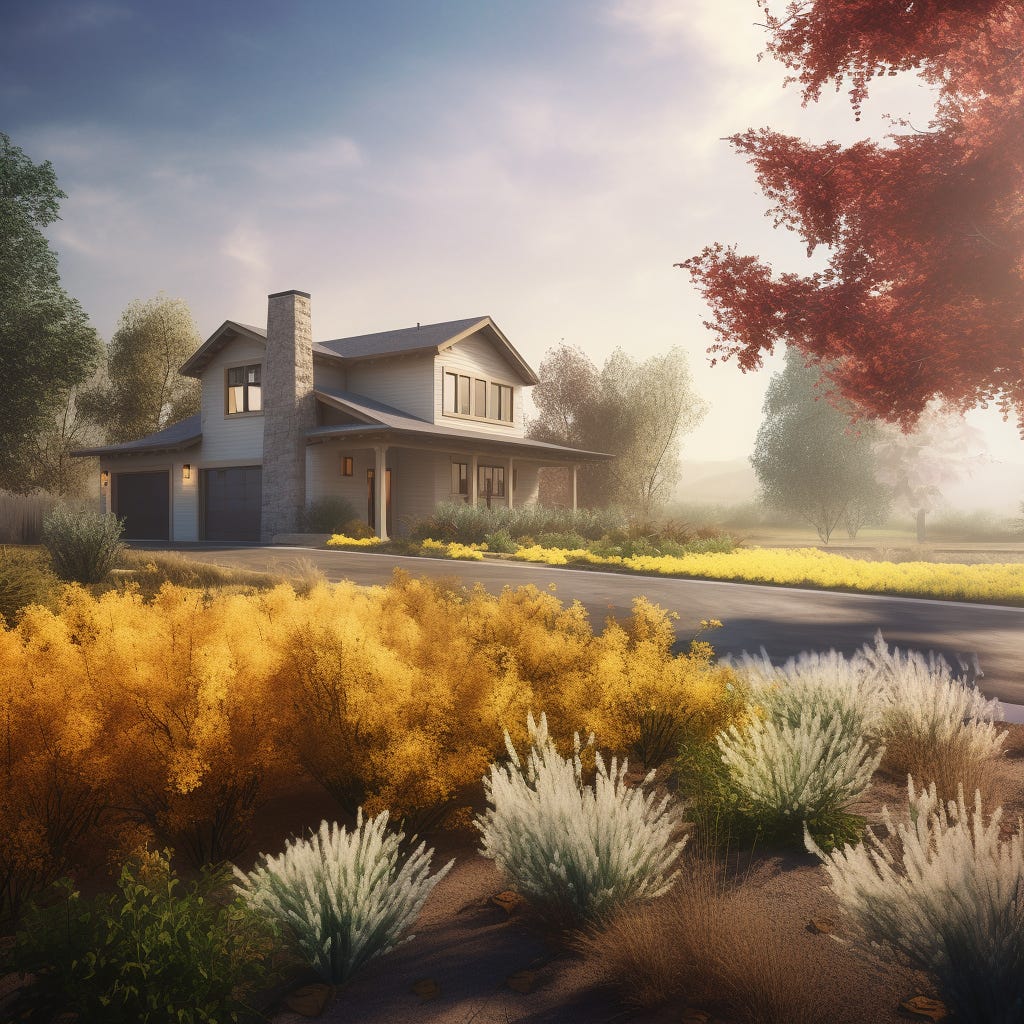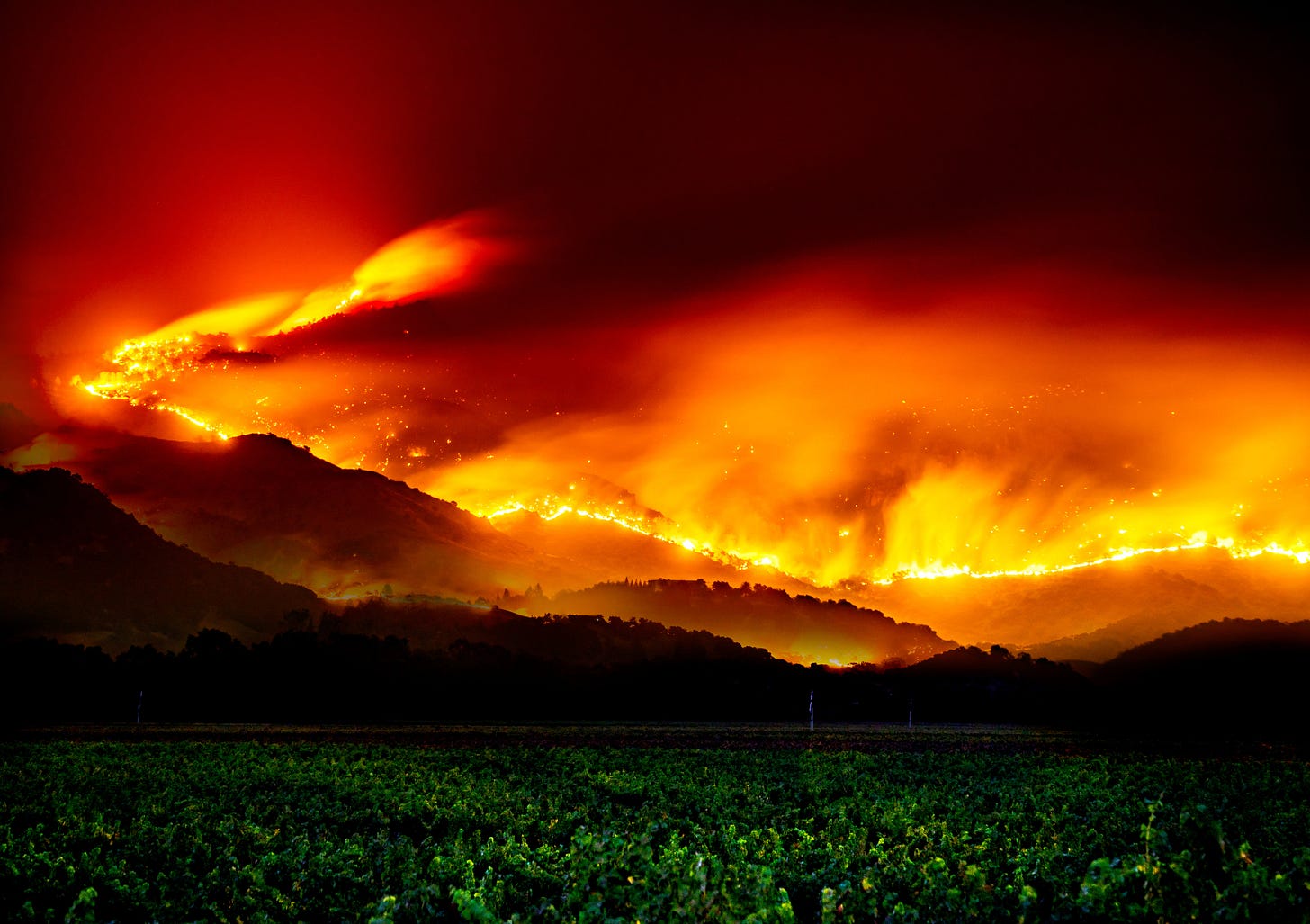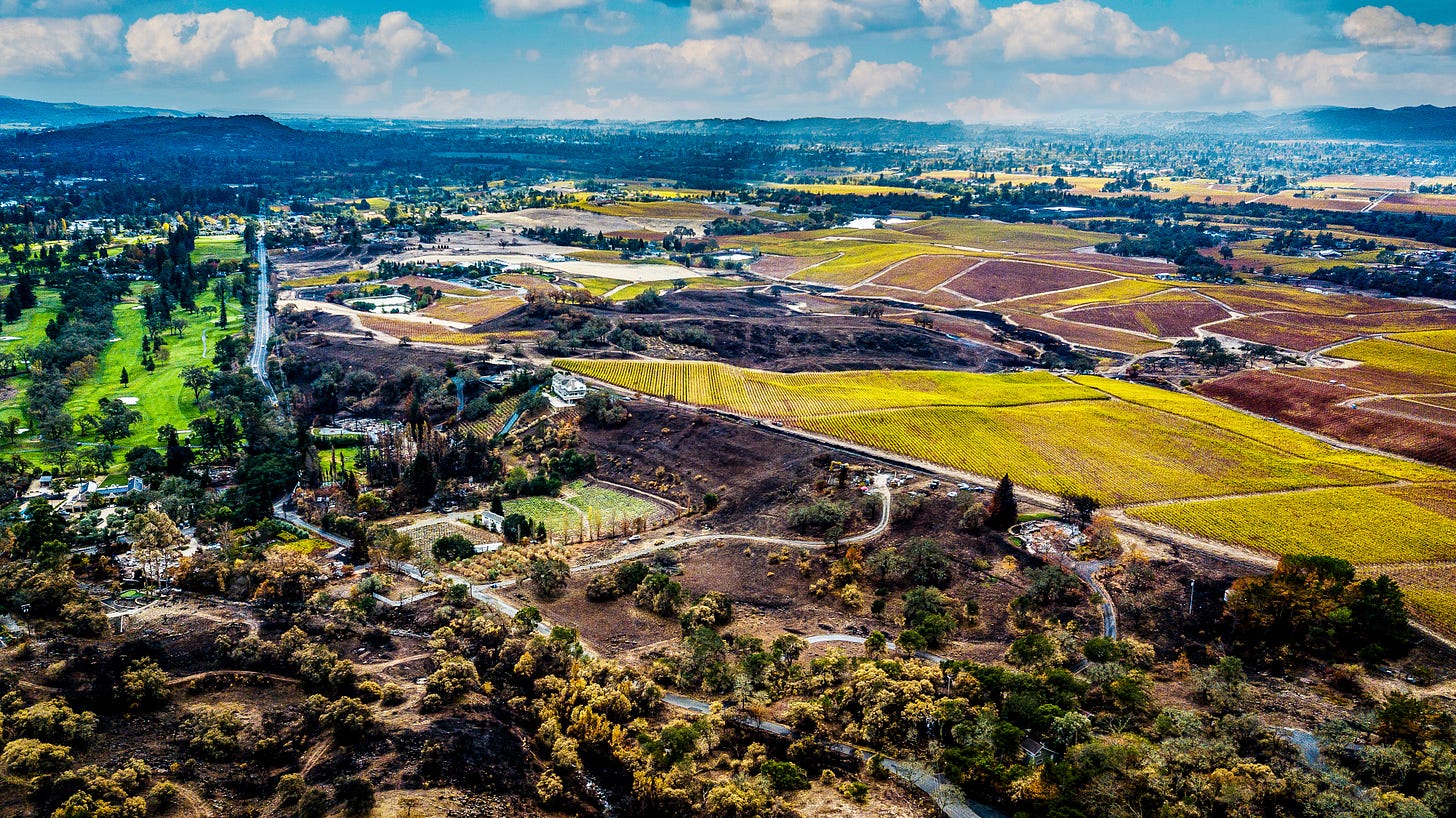Balancing beauty and safety: Lessons in landscaping for Napa's wildland-urban interface
By Donna Woodward
NAPA VALLEY, Calif. — When I moved to a house on Napa’s Dry Creek Road in 2009, I found myself living in the middle of a meadow surrounded by forest. The house looked bare sitting there in a grassy field. I wanted to add some color and make it look more inviting.
Due to the natural setting, I thought native plants would be ideal. I joined the California Native Plant Society and went to its fall and spring plant sales. My watchwords were “drought tolerant” and “deer resistant.”
We have all heard the benefits of a water-wise landscape. It not only saves precious water, it also requires less attention from the gardener. Most native plants need little water and fit right into my aesthetic.
Not surprisingly, the native plants I chose were easy to grow and, once established, thrived and spread. Our house had one large blank wall that I wanted to cover, so I planted a climbing wild rose on a trellis just in front of the wall. The rose quickly filled the space and more.
A wild clematis that I planted around our deck climbed over the deck railing and spread via runners in all directions. Also thriving within a few feet of the house are a flowering currant (Ribes sanguineum), a California lilac bush (Ceanothus) and monkey flower (Mimulus).
Eventually I broke down and planted some non-natives, including rock rose and lavender, although I still opted for drought-tolerant plants.
None of the problems with vigorous plant growth or spreading really concerned me — that is, until the fires of October 2017. I was suddenly made aware of the dangers of living in a WUI (pronounced wooey), or Wildland-Urban Interface.
As the Napa Valley has grown, more people have developed properties in the surrounding woodlands. It’s a wonderful life. You live amid nature and have privacy and peace and quiet, yet you are only a short drive from town. However, you also live with the possibility of wildfire.
We were lucky in 2017. The Nuns Fire crept slowly up Mount Veeder before reaching our woods. Our home was spared, thanks to the firefighters who camped in our meadow.
Later we visited the devastation in the Atlas Peak area, where the wildfire was fanned by high winds and low humidity. It was heart-wrenching to hear the tales of narrow escapes and know that some didn’t make it. The wreckage was horrifying.
Year after year, the Dry Creek-Lakoya Volunteer Fire Department and its offshoot, the Mount Veeder Fire Safe Council, had been warning us at meetings and seminars to keep the areas around our homes clear of vegetation, but I hadn’t wanted to hear it. Surely I can have a flower garden! What did they expect? A concrete block of a house in the middle of a bare field?
After seeing what a wind-whipped wildfire can do, I realized it was time to reconsider my landscape. The problem is that drought-tolerant plants tend to be woody. Woody shrubs often send out new growth while the undergrowth dries up and the hidden leaves die. They look lush on the outside, but they can hide a large quantity of dead stems and foliage.
In a wind-driven fire the biggest danger to your home is flying embers. These embers can ignite anything flammable that is in contact with the house. If you have woody bushes near the house, they can ignite and burn hot enough to set fire to the house.
Any plant or tree that sheds dry leaves or needles can create a buildup of those materials around stairs and in eaves and corners. These conditions contribute to high fire danger.
The Mount Veeder Fire Safe Council offers free evaluations of homes for fire safety. They visited our home and gave advice on hardening our house against fire.
Once the undergrowth problem was pointed out to me, I was shocked to discover so much dead material in the large Ceanothus next to the house. It could have combusted, so I pruned out all the undergrowth.
The rock rose shrubs likewise needed to have dead material removed. I found that I could cut the shrubs down to the ground in summer and they would put out new growth that could be kept short throughout the fire season.
We are currently working on moving all plants away from the house and installing several feet of hardscape around the walls. In hindsight I wish I had not planted some of the spreading plants, especially the wild rose and clematis. Controlling them is an ongoing battle.
You can find specific recommendations about landscaping for fire safety at the Napa Communities Firewise Foundation’s website. The website also has many other tips for protecting your home. You can also find contact information for your local Fire Safe Council. These resources provide a lot of support for homeowners.
Fire season is here again. Whether you live in the country or in town, the danger is real, but you can take steps to protect your property.
Home Vineyard Workshop: Join UC Master Gardeners of Napa County’s Integrated Grape Team for a workshop on “Grapevine Genetics” on Saturday, Oct. 21, from 10 a.m. to noon, at University of California Cooperative Extension, 1710 Soscol Ave., Napa. Learn the ins and outs of grapevine genetics from UC Davis experts Dr. Dianne Velasco and Dr. Carole Meredith. Registration required.
Gardening with the Masters: Join UC Master Gardeners of Napa County for a gardening workshop on Saturday, Oct. 21, from 10 a.m. to noon, at OLE Health’s South Campus, 300 Hartle Court, Napa. Children 5 and older are welcome if accompanied by an adult. Class size is limited. Registration required.
Help Desk: The Master Gardener Help Desk is available to answer your garden questions on Mondays and Fridays from 10 a.m. until 1 p.m. at the University of California Cooperative Extension Office, 1710 Soscol Avenue, Suite 4, Napa. Or send your questions to mastergardeners@countyofnapa.org. Include your name, address, phone number and a brief description.
Donna Woodward is a UC Master Gardener of Napa County.








Donna, good job and very timely!!!!